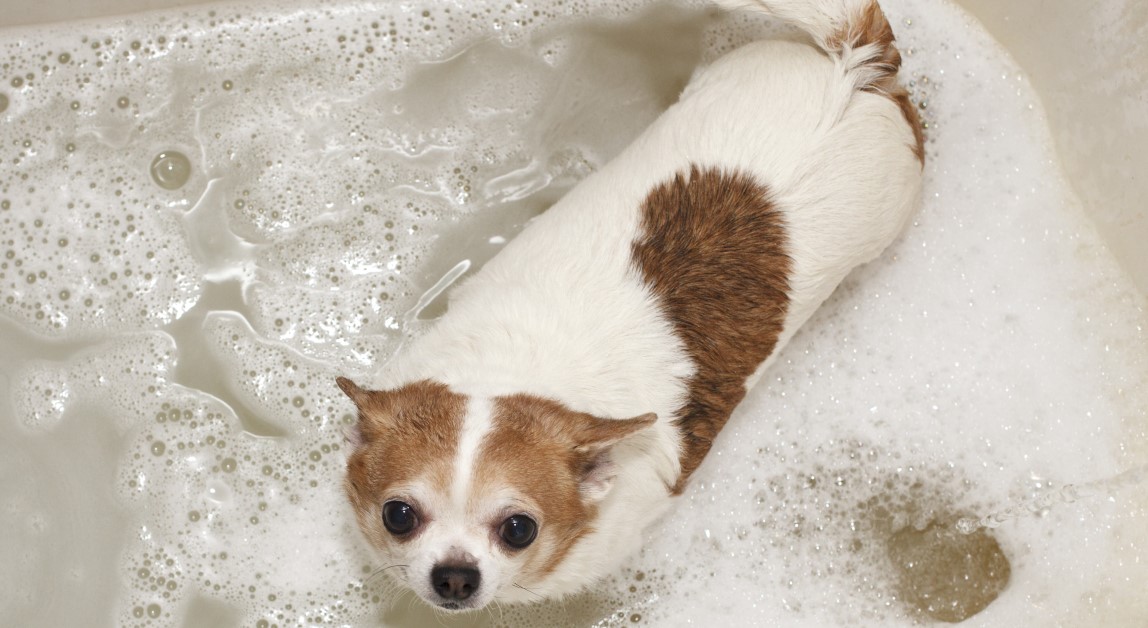Ask Dr. Jenn: How Should I Make My Cat Comfortable Traveling By Car?
I'm moving to a different state, and I have to bring my cat in the car. What would be the best way to transport her and get her adjusted to our new home?

I don't think I have ever met a cat that likes car rides. Some will drool and vomit all over themselves and your seats; others may climb on your head or under your seat, creating unsafe driving conditions. Many cats are not shy about sharing their displeasure, meowing, crying, or yowling the whole trip and making everyone miserable.
Your kitty will probably never love the car, but with a little bit of work and training, you can at least make the trip tolerable.
First, make sure you have a carrier. For your safety and the safety of your kitty, she should not be running loose in the car. But don't wait until five minutes before you leave to introduce her to the carrier. A few weeks before your planned trip, bring the carrier into the house. If it is a used carrier, make sure it is clean and in good condition. Check the door to make sure it closes tightly and that the carrier is solid and won't fall apart when picked up.
Place the carrier in an area where your cat likes to spend time. Let her inspect it on her own terms. She may ignore it, hide from it, or rub her face on it to mark it as her own. Make the carrier a good and happy place by putting treats or her favorite toys inside the carrier. You can use a laser pointer to entice her inside. If she likes catnip, a new catnip toy inside the carrier never hurts. I recommend spraying the inside of the carrier with a pheromone spray, such as Feliway. Feliway helps cats feel a sense of calm and security.
Once she is used to the carrier and goes in it frequently, close the door for a few minutes at a time. This will teach her that the door may close, but it will always open again.
When you pick up the carrier with your cat in it, make sure you hold it securely. Do not carry the carrier by the handle. This causes the carrier to swing back and forth, making the kitty feel unsafe and terrified. Also, if the carrier isn't properly put together, it could fall apart. Instead, hold the carrier like a fragile box, by the top and bottom or both sides, so your cat feels safe and secure.
After she is used to the carrier in the house, you may want to take her for a few short trips to try to get her used to traveling. Place the carrier either on the floor of the car or on a level seat. Cover the carrier with a blanket or towel sprayed with Feliway. This keeps the kitty from looking out the window and can reduce motion sickness.
For some cats, this is all it takes for a happy, quiet road trip. But other cats need more. There are many over-the-counter supplements that can reduce the anxiety of a car ride and a big move. Many of my patients have found Zylkene or Composure helpful, especially if started a few days before your trip. Over-the-counter antihistamines, such as Benadryl or Dramamine, can reduce nausea but are not as effective in cats as in dogs.
If your cat really struggles on car rides or you don't have much time to adequately prepare, talk with your veterinarian. She may prescribe anti-anxiety medications, such as gabapentin, or medications to reduce nausea, such as Cerenia.
For car rides longer than eight hours, your kitty may need a potty break. If you have a large enough carrier or kennel, you can place a litter box inside. If it is too small to accommodate a litter box, place a clean litter box on the floor of the car and open the kennel door. Make sure all car doors are securely closed. A terrified cat may try to escape. Depending on how strong your cat's bladder is, she may or may not use the box.
This is also a good time to offer her some water. I don't recommend having water in the carrier when the car is moving because it will probably spill all over your kitty, making the car ride even more stressful. However, you should offer her some water every few hours to help prevent dehydration. I recommend waiting to offer food until you have stopped for the night. A full tummy may cause nausea when the car starts moving again.
If you are staying in a hotel, make sure it is pet-friendly. Keep your kitty in her carrier when you are not in the room. When you settle in for the night, have fresh food, water, and a clean litter box easily accessible. Spray the room with Feliway to make her feel more secure. In the morning, give yourself plenty of time to get her back in the carrier and settled in to the car before you start driving again.
When you arrive in your new home, find a safe and secure room for your kitty to stay in. You don't want her slipping out when you are moving boxes in. Again, use Feliway in the room. Keep the carrier open in the room, and have food, water, and a clean litter box readily available.
Once you have moved in and reduced traffic in and out, let your kitty explore the house on her own terms. She may rub her face on the walls, carpet, and furniture. This is just her way of spreading her pheromones and marking it as a safe place. You may need to continue anxiety meds for the first few days to weeks while she adjusts to her new home.
I recommend purchasing a new bag of cat food and kitty litter BEFORE you move, in case you can't find the same brand in your new town. This is not the best time to make big changes to her daily routine.
I hope these tips make your move a little less stressful for everyone. Talk with your veterinarian before you leave for other helpful advice. Take a copy of your pet's health records and ask if your vet has a recommendation of another vet clinic in your new home.
Good luck and safe travels!
Ready to start saving money on pet wellness care?
Then take a look at Mint Wellness, the pet wellness plan that provides fast reimbursement on routine pet care. Save on vaccinations, wellness exams, preventatives, dental, and more!
Learn More


